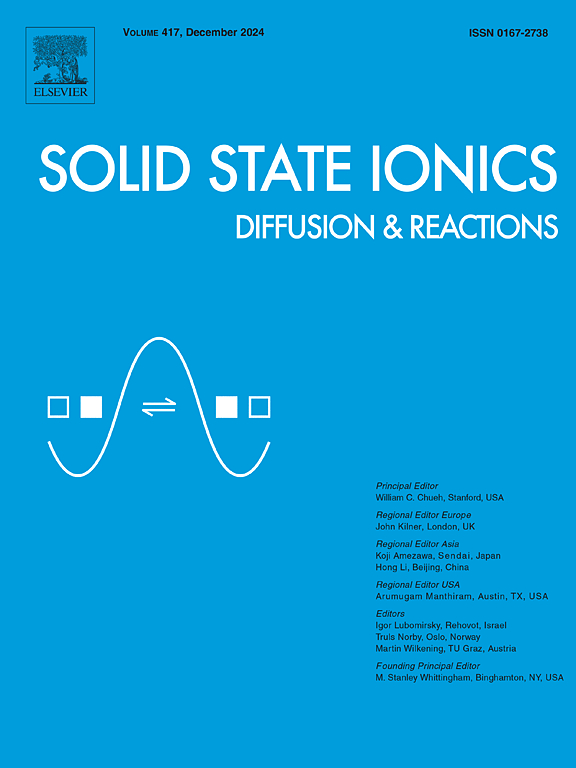构建高性能锂离子电池用无共嵌层醚基电解质
IF 3.3
4区 材料科学
Q3 CHEMISTRY, PHYSICAL
引用次数: 0
摘要
锂离子电池作为新一代高能量密度存储设备,由于Li+输运动力学受阻、脱溶能障碍增加、固液界面失效风险等科学挑战,其低温性能受到限制。为了解决这些问题,本研究开发了一种基于弱溶剂化策略的新型醚基电解质配方,该配方具有宽温度范围的适应性。这一成果是通过界面优化与溶剂化结构重构相结合实现的,可以在低温下实现高度稳定的储能。电化学数据表明,用该电解质组装的Li||Gr(石墨)半电池在室温下具有359.2 mAh g−1的高初始可逆放电容量。在0.1 A g - 1下循环200次后,其容量仍保持90.52%,即使在- 20°C下也能保持240 mAh g - 1的可逆容量。界面化学和体相输运的协同分析表明,电解质与石墨阳极之间具有良好的相容性,并且在石墨表面形成均匀稳定的固体电解质界面(SEI)膜。独特的溶剂化结构分布显著增强了离子扩散动力学,提高了电解质的导电性。本文章由计算机程序翻译,如有差异,请以英文原文为准。
Constructing none co-intercalation ether-based electrolytes for high-performance lithium-ion batteries
Lithium-ion batteries, as a new generation of high-energy-density storage devices, face limitations in low-temperature performance due to scientific challenges such as hindered Li+ transport kinetics, increased desolvation energy barriers, and risks of solid-liquid interface failure. To address these issues, this study developed a novel ether-based electrolyte formulation based on a weakly solvating strategy, which exhibits wide-temperature-range adaptability. This achievement was realized through interfacial optimization combined with solvation structure reconfiguration, enabling highly stable energy storage at low temperatures. Electrochemical data demonstrate that the Li||Gr (Graphite) half-cell assembled with this electrolyte delivers a high initial reversible discharge capacity of 359.2 mAh g−1 at ambient temperature. It retains 90.52 % capacity after 200 cycles at 0.1 A g−1 and maintains a reversible capacity of 240 mAh g−1 even at −20 °C. A synergistic analysis of interfacial chemistry and bulk phase transport reveals excellent compatibility between the electrolyte and the graphite anode, along with the formation of a uniform and stable solid electrolyte interphase (SEI) film on the graphite surface. The unique solvation structure distribution significantly enhances ion diffusion kinetics and improves electrolyte conductivity.
求助全文
通过发布文献求助,成功后即可免费获取论文全文。
去求助
来源期刊

Solid State Ionics
物理-物理:凝聚态物理
CiteScore
6.10
自引率
3.10%
发文量
152
审稿时长
58 days
期刊介绍:
This interdisciplinary journal is devoted to the physics, chemistry and materials science of diffusion, mass transport, and reactivity of solids. The major part of each issue is devoted to articles on:
(i) physics and chemistry of defects in solids;
(ii) reactions in and on solids, e.g. intercalation, corrosion, oxidation, sintering;
(iii) ion transport measurements, mechanisms and theory;
(iv) solid state electrochemistry;
(v) ionically-electronically mixed conducting solids.
Related technological applications are also included, provided their characteristics are interpreted in terms of the basic solid state properties.
Review papers and relevant symposium proceedings are welcome.
 求助内容:
求助内容: 应助结果提醒方式:
应助结果提醒方式:


